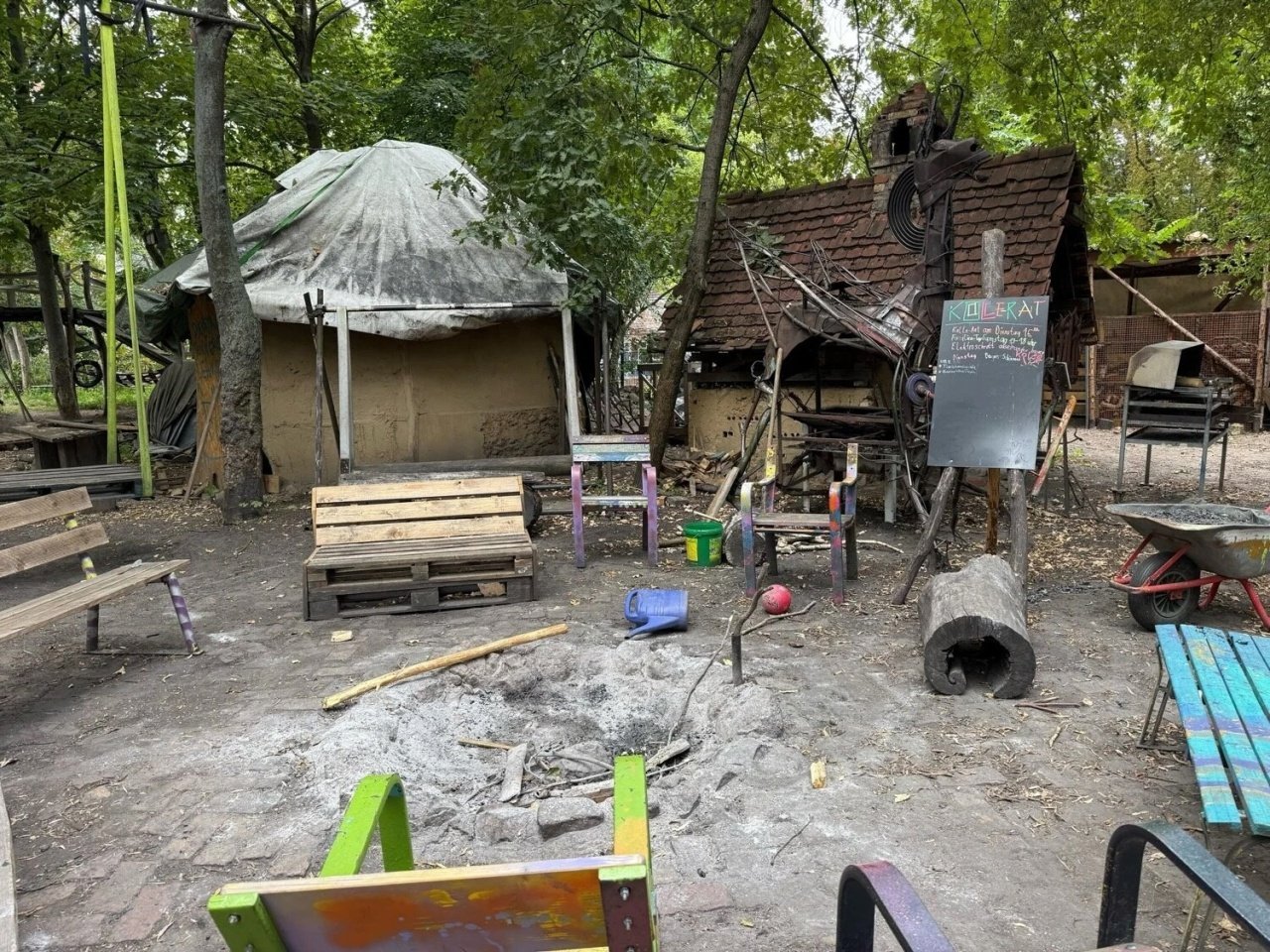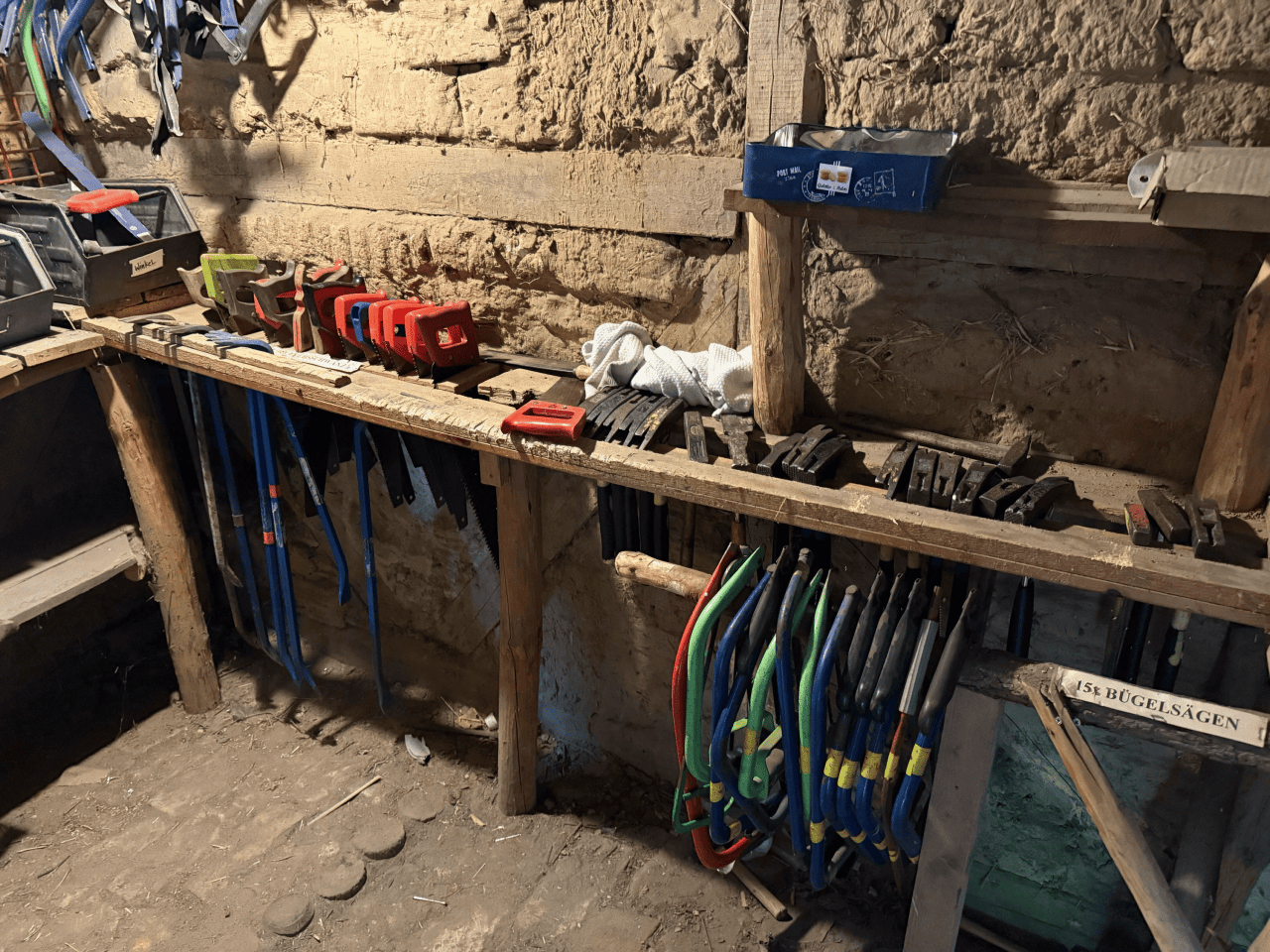The anarchic playgrounds where putting kids at risk is the point
Lifestyle

Audio By Carbonatix
12:00 PM on Friday, October 3
By Peter Yeung for Reasons to be Cheerful, Stacker
The anarchic playgrounds where putting kids at risk is the point
Flaming stone fire pits, wonky swings, lopsided wooden forts, stacks of hammers and saws, and even an abandoned automobile turned into a play den: Kolle 37 is not your usual kind of kids’ recreation space.
This 4,000-square-meter, anarchic adventure playground in the heart of Berlin’s central Prenzlauer Berg neighborhood is like the love child of a Wes Anderson set designer and a steampunk doorman at the city’s infamous Berghain nightclub.
Also known as the Adventurous Construction Playground Kolle 37, this unconventional educational space allows children to build — or, indeed, destroy — structures as they see fit. (Parents can enter only one day a week, on Saturdays.)
“To a lot of people it looks like junk and dirt, and [they think] that it isn’t useful,” Marcus Schmidt, who trained as a social worker before joining Kolle 37 in 2005, tells Reasons to be Cheerful. “But here you get prepared for your future life.”

The idea is that “risky” adventure playgrounds like Kolle 37 permit and encourage children to contend with genuine challenges from a young age, setting them up to better deal with all kinds of obstacles in adulthood. Proponents say they offer an important riposte to the risk-averse model of learning and play that has become increasingly dominant in places like the U.S. and which critics say limits early development.
In practice, that means that the pro-risk Kolle 37 is home to great piles of wooden logs, half-built shacks and random structures, an impressive quantity of mud and dirt, and beautiful leafy trees dotted throughout. And it’s constantly changing.
“You have to talk to your neighbors,” says Schmidt, who is one of a handful of full-time adult employees who oversee but do not interfere. “You share tools, work with others, practice problem solving, compromise. It’s the democratic process.”
Kolle 37, which started in 1990, is open to children between the ages of six and 16, and offers a rare space for unaccompanied play and so-called “free-range parenting” — moms and dads are asked to give a cell phone number and leave the site promptly. The playground, which receives funding from Berlin government authorities, also offers practical courses such as pottery, blacksmithery, archery and handicrafts, and has a space for music practice.
In the depths of Berlin’s freezing winters, there might only be a dozen children present on any given day, but during the summer peak the number can exceed 100. Weekly meetings are held among the kids to discuss rules and problems, with a system of cards used for behavioral issues. Yellows serve as warnings and reds mean a child must leave for the day, for example if they hurt someone or stole something.
“They run everything,” says Schmidt. “If the government or officials visit, the kids give the tour. There’s an equal relationship between children and adults here.”
Encouraging children to engage in risk has a wide range of benefits, says Ellen Beate Hansen Sandseter, associate professor at the Queen Maud University College of Early Childhood Education in Norway and co-author of the book Risky Play: An Ethical Challenge.
“It’s good for physical development, motor skills and learning how to cope with fears,” she says. “We habituate them through risky play, self-confidence building, courage, learning how to navigate the environment and build social skills.”
There’s already a body of research showing how risky play can set children up for life. One 2004 study found that children who took part in trained physical activities — like the archery and pottery offered at Kolle 37 — in kindergarten had a “significant improvement” of their motor skills and a reduced overall number of accidents. Meanwhile, a 2022 study co-authored by Sandseter concluded that the “thrilling emotions” involved in risky play help children mature and learn to deal with “complex psychosocial settings.” Last year, the Canadian Paediatric Society even set out a position statement encouraging non-hazardous risky play.
Perhaps the ultimate sign of proof is that even insurance companies agree. In a 2020 report about playgrounds, the DGUV — the association of statutory accident insurers in Germany — stated that it is “particularly necessary” for children to practice taking risks in order to improve longer-term safety. “Allowing risks and daring is just as much a part of child-friendly safety promotion as regulating and prohibiting them,” it said.
Adventure playgrounds are plainly a lot of fun, too.
“It’s more joyful to be a child if you are allowed to do that,” says Sandseter. “It’s exhilarating to feel the sense of mastery of something they might be afraid of.”

Mitja, 13, has been coming to Kolle 37 almost every day for the past six years.
“I’m usually around the campfire because there are a lot of other kids there,” says Mitja. “I can chat and chill there. But I also help with chopping wood and building huts. I’ve made new friends, and I don’t sit in front of the computer all day.”
Despite the recent surge in support for adventure playgrounds, they are far from new, having been popularized in postwar Europe following the opening of Copenhagen’s Emdrup Junk Playground in the early 1940s. Danish architect Carl Theodor Sørensen tore up the traditional four S’s of play — swings, slides, sandpits and seesaws — and let children lead their own play, digging caves in the ground and assembling their own houses from junk they found.
Since then, Germany has gone on to become arguably the “risky playground” capital of the world, and is home to about 400 sites out of an estimated 1,000 worldwide, notably also in Denmark, France and England, such as the Big Swing Adventure Playground in Bradford. Stateside, New York City’s Governors Island is home to The Yard, the city’s only adventure playground and one of only a few in the U.S. It has welcomed over 60,000 city kids since it opened in 2016 “for building, exploring, imagining and destroying.”
“There is a movement in several countries right now,” says Sandseter. “Even though some remain really risk-averse, others have had some really good play advocates.”
Nonetheless, even Berlin’s Kolle 37, despite decades of proven service, remains the subject of heated debate when it comes to safety, particularly as the surrounding neighborhood of Prenzlauer Berg has gentrified over the years.
The reality is there aren’t big accidents at Kolle 37, Schmidt says. Sometimes children step on a nail and occasionally there are broken arms. But Schmidt argues these accidents happen everywhere — and often when children aren’t being watched.
In the same vein, Sandseter is at pains to distinguish between risks and hazards, the latter of which she argues is the responsibility of adults. Adventure playgrounds are about taking risks with intention, not going blindly into danger.
“Hazards are things that we can’t expect children to identify,” she elaborates. “I’m not talking about pushing children into dangerous situations. A rotten pole in the swing sets, for example, that’s our responsibility as adults.”
Nonetheless, national contexts are also a massive factor in whether adventure playgrounds can flourish. Public space in Germany is not held hostage by liability lawsuits as can be the case in the U.S. Another aspect is the health system of a country.
“The U.S. is a bit more difficult, it’s very risk-averse,” says Sandseter. “If a child climbs a tree, falls and breaks an arm, it’s completely free to be treated in some countries. While in the U.S., the family could go personally bankrupt.”
But Kolle 37 and other advocates point to the child’s right to play, which is enshrined by the UN Convention on the Rights of the Child. They say that with the global playground equipment market valued at more than $6 billion in 2024, it’s an important investment to get right.
“This is a really, really special place,” says Schmidt. “It looks different every day. And the kids made it, not some engineer.”
This story was produced by Reasons to be Cheerful and reviewed and distributed by Stacker.


